
views
Spraying Safely

Contact a local certified avian veterinarian. An avian vet has in-depth knowledge about birds. There are many types of birds, and not all birds react to toxins and foreign substances in the same way. Ask the avian vet how to protect your pet bird. For example, if you have a parrot, ask the vet, “How can I protect my parrot when spraying my house for fleas?” If you have a cockatoo, ask the vet, “How can I protect my cockatoo when spraying my house for fleas?” Listen carefully to the vet. Take notes using a pen and paper. Put your newfound knowledge about how to protect your pet birds when spraying for fleas into action. Ask your vet to recommend an avian specialist.
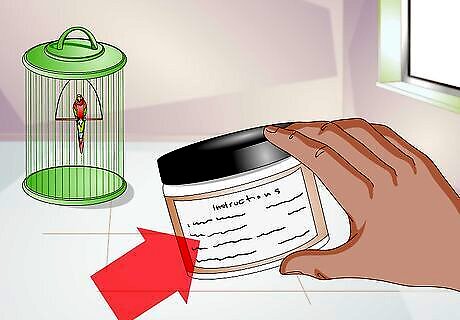
Follow all product instructions. When spraying your house for fleas, the flea spray product will have a set of instructions on its label. This label is typically on the side of the product spray bottle. Read this label for information about how to protect pet birds when spraying your house for fleas. For instance, your flea spray bottle might read, “Before spraying, vacuum your entire house.” In this case, you should vacuum your entire home before using the flea spray. If the directions say, “Apply a light, even layer of flea spray to your carpet,” apply a light, even layer of flea spray to the carpet and avoid applying a heavy layer of flea spray.
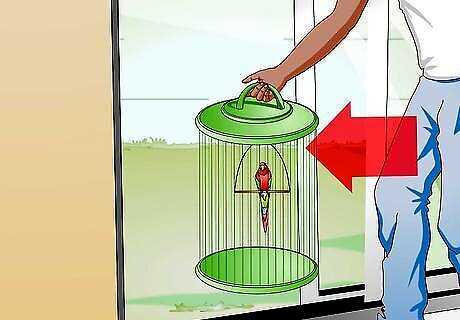
Remove your bird. Cover your pet bird’s cage. If the weather is nice, move your pet bird to the garage. If it is not so nice, move the bird to a neighbor’s residence. Once your pet bird arrives in its temporary residence, you can remove the cover from the bird cage. If some areas of your house are free of fleas, you could remove your pet bird to the untreated area. For instance, if you have fleas downstairs but not upstairs, you might remove the pet bird to the upstairs area. If you choose to keep your pet bird in an unaffected room in the residence, keep the window open, door closed, and central air and heat off. However, it is always safest to remove your bird completely from the house, due to possible exposure to fumes. Keep your pet birds out of the residence until the flea spray is completely dry. Open your windows so the spray ventilates completely. Typically, you and your family – including your pet birds – will need to be out of the house for about three hours until the spray settles and dissipates.

Remove all bird-related items. If your pet birds live in bird cages, you should remove the cages along with the birds. Remove all bird toys, water dishes, and food bowls, too. Replace them in the pet bird’s cage while it is staying in its temporary location outside your residence. Seal your bird’s food bag and place it in a cabinet. If you later realize that you forgot to remove your bird’s water bowl or a similar bird-related item, wash it thoroughly before replacing it in your pet bird’s cage.
Preventing a Flea Infestation in Your Cat or Dog
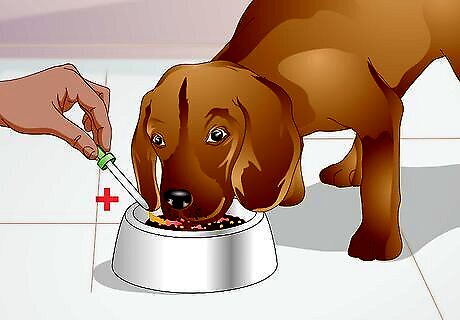
Use a prescription flea medication from your veterinarian. This is the most reliable way to treat a flea infestation. Your vet will advise you what should work the best for your pet. If you are curious about natural treatments or supplements, consult with a holistic veterinarian about effective options.
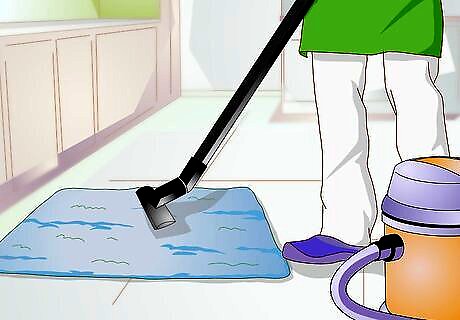
Clean the house. Vacuum your entire residence completely. Don’t forget to vacuum those hard-to-reach places like beneath drapes and curtains, and between two closely-placed pieces of furniture. Additionally, wash your pet’s bedding regularly. If your dog or cat has a special bed where they rest or sleep, wash it regularly. Use hot soapy water. Check the bedding for a care tag that provides specific directions for laundering. Wash your pet at the same time to ensure that no fleas are present anywhere. Clean everything and your pets like this monthly for a minimum of three months to ensure you have gotten rid of all of them.

Care for your pet’s coat. Keep your pet’s coat and skin healthy and strong by feeding it a high-quality diet of food recommended by your veterinarian. Additionally, wash your pet regularly. Comb your pet at least once a week to manually remove any fleas that might be hitching a ride. If you already have a flea infestation, comb your pet daily (or several times daily) with a fine-toothed comb. Dip the comb in water after each pass over your pet’s coat. This will remove the fleas from reattaching to your pet.
Using Alternatives to Spraying
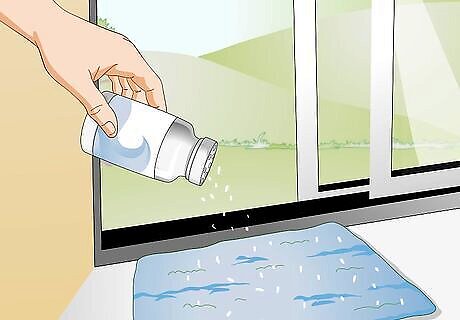
Use diatomaceous earth (DE). DE is a powder composed of fossilized single-cell algae. You can sprinkle it in front of doorways and on carpets to prevent the spread of fleas. It should not be inhaled but is harmless if ingested. Remove your pets from the area and sprinkle the powder around your home according to manufacturer directions. Do not use DE certified for use in swimming pools.
Be careful about using any kind of spray around birds. Labeling that says things like "non-toxic" or "safe for pets" often does not apply to birds. If you think you have found a spray that might be safe, you should still check with your vet before using it!















Comments
0 comment